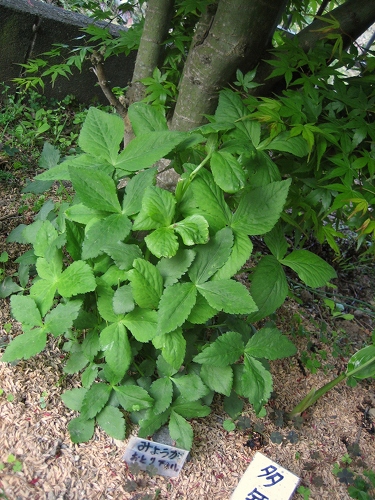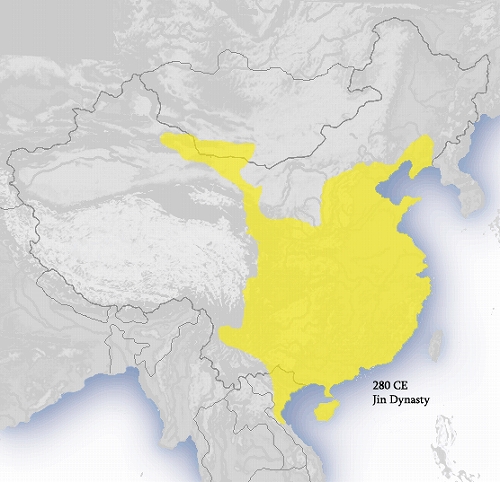生呉 豆腐由来 呉王朝 「つれづれ樹」 [育まれる(歴史)]

豆腐を作ってる番組観てたら、
大豆を石臼で磨り潰したものを「生呉(ナマゴ)」と云う。。
ただ それだけのことで 豆腐の由来調べてみました。。
「呉(ゴ)」
魏呉蜀(ギゴショク) 中国王朝の「呉」です。
280年に晋軍は建業に達して孫晧は降伏、呉は滅亡した。

「呉服(ゴフク)」
呉服神社(クレハ)は、大阪府池田市にある神社。
呉から渡来し、機織技術を伝えたとされる。
織姫・呉服媛と、仁徳天皇を祀っている。
西晋(司馬炎 265年 - 316年)
成立期は中国北部と南西部を領する王朝
呉を滅ぼして中国全土を統一。

西晋に滅ぼされた呉王朝は 270年代に流浪の民となってる。
呉の領土は そのまんまに西晋になっている。
海由来の“にがり”が使われ、
大豆を擦り潰したものが“生呉”とされるのなら、、
豆腐は 呉王朝からの渡来人によって もたらされてる。
南宋末期(1,270年代) 豆腐が一般社会に普及。。
古来の日本の伝統的な製法では製塩の過程で生じるにがりが主に
使われていた。
十分に漬けあがった大豆を適度に水を加えながら石臼でクリーム状に
磨り潰す、
このクリーム状に磨り潰された大豆のことを「呉」と呼ぶ。
http://ja.wikipedia.org/wiki/%E8%B1%86%E8%85%90
豆腐は南宋末期にかけて一般に普及し、明朝や清朝の時代になると豆腐の加工品も盛んに作られるようになった。
現在の日本の豆腐は柔らかくて淡白な食感を特徴とする独特の物で、これに対する中国や韓国の豆腐は炒めたり揚げたりして調理されることが多かったため、日本の豆腐に比べると水分が少なく堅いものとなっている。
鎌倉時代末期ごろには民間へ伝わり、室町時代には日本各地へ広がった。そして江戸時代には良く食べる通常の料理となったとされる。この江戸時代の豆腐は、今日でいう木綿豆腐のみであった。
天明2年(1782年)に刊行された『豆腐百珍』には、100種類の豆腐料理が記述されており、また様々な文学でも親しまれてきた。当時より、豆腐は行商販売もされており、前述の豆腐百珍は大きな人気を得て一般的な料理であった。行商の豆腐屋はラッパや鐘を鳴らしながら売り歩いていた。
大陸中国では石膏(硫酸カルシウム)を粉末とし水に溶いたものを凝固剤とするが、古来の日本の伝統的な製法では製塩の過程で生じるにがりが主に使われていた。
豆腐の約80~90%は水であり、また、豆腐の製造工程でのさらし水が良くなければ淡白な豆腐の味を損ねることになるためである。
原料の大豆を、一夜(12時間ほど)真水に漬けておく。翌朝、十分に漬けあがった大豆を適度に水を加えながら石臼でクリーム状に磨り潰す、このクリーム状に磨り潰された大豆のことを「呉」と呼ぶ。次に呉をお釜に移し、適度に水を加えて濃度を調整し薪にて炊き上げる。この時、呉はサポニンの作用で激しく泡立つため、消泡剤として食用油に石灰を加えたものを適度に振りかける。十分に炊き上がった呉を、布で濾して豆乳を木桶に取る。この豆乳が冷えないうちに凝固剤としてにがりを適度に加え、櫂と呼ばれる木の板で撹拌する(にがりを打った以降の一連の作業を寄せと呼び、職人の技の見せ所である)。豆乳の濃度、温度、にがりの量、そして適度な「寄せ」がそろうと、豆乳は水と分離することなく固まり始め、やがておぼろ状、またはプリン状の豆腐となる。これを崩しながら内側に布を敷いた型の中に盛り込み、蓋をして重石を掛け、硬く水を切ると豆腐(木綿豆腐)となる。
IXYDIGITAL60(ISO50)&PHOTOSYOP
< 生業ですが、アバウトです! お気に召せば 遡って画像は ご自由に転載&ご利用下さい。 >
太郎さんのお薦め
【杉本商会】
http://web1.kcn.jp/ishi_hal/Welcome.html
(木工芸・杉玉・お茶を 扱われてます。)
【十津川荘】
http://www.102k.net/
(十津川行くなら 太郎のお薦め!!!!)
以下は、エキサイト翻訳になります。
What mashed program view てた et al. who is making tofu, and a soybean with the stone mortar is called "raw Kure (ナマゴ)." . Merely With the thing of only that Origin investigation てみました of tofu. . "Kure (ゴ)" 魏呉蜀( ギゴショク It is "Kure" of a dynasty of China. 晋軍 reached 建 business in 280 and, in surrender and Kure, 孫晧 went to ruin. "Dry goods (ゴフク)" A dry-goods shrine (クレハ) is a shrine in Ikeda-shi, Osaka. It comes across the sea from Kure, and it is supposed that machine weaving technology was conveyed. Vega and 呉服媛, and Emperor Nintoku are deified. A 西晋 (司馬炎 265 years to 316 years) formation term is a dynasty which possesses northern China and a southwest part. Kure is ruined and the China whole country is unified. Kure dynasty ruined by 西晋 The 270s come vagrant people. Territory in Kure It is に西晋 as it is. It is if the "bittern" of sea origin is used and what rubbed and crushed the soybean is made into "student Kure", Tofu Visitor from the Kure dynasty It is brought. Southern Song last stage (the 1,270s) Tofu spreads through community at large. . In the traditional process of advisory Japan, the bittern which arises in process of salt manufacture was mainly used. This soybean mashed creamily is called [ which mashes creamily the soybean which fully soaked and went up with a stone mortar while adding water moderately ] "Kure." http: Generally it spread, having covered //ja.wikipedia.org/wiki/%E8%B1%86%E8%85%90 tofu over the Southern Song last stage, and when it became the tomorrow morning and Qing Dynasty era, the processed goods of tofu also came to be made briskly. It is a peculiar thing characterized by texture soft the tofu of present Japan and frank, and since the tofu of China and South Korea to this was stir-fried, or lifted and cooked in many cases, compared with Japanese tofu, moisture is few hard things. At the last stage time the end [ the Kamakura period ], it got across to the private sector, and spread to Japanese every place at the Muromachi period. And it is supposed at the Edo period that it became the usual dish eaten well. The tofu of this Edo period was only what is known today as cotton tofu. it was published in Tenmei 2 (1782) -- " -- 100 kinds of tofu dishes are described by tofu 100 uncommon", and it has been loved also for various literature. as for tofu, itinerant trade sale is also carried out from that time -- the above-mentioned tofu 100 -- uncommon -- は大きな popularity was acquired and it was a common dish. Sounding a trumpet and a bell, he sold and the tofu maker of the itinerant trade was walking. Although what powdered gypsum (calcium sulfate) and was melted in water was used as the coagulant in continent China, the bittern which arises in process of salt manufacture was mainly used in the traditional process of advisory Japan. About 80?90% of tofu is water, and it is because [ in the manufacturing process of tofu ] the taste of frank tofu will be spoiled if it exposes and water is not good. The soybean of materials is soaked in fresh water for about 12 hours overnight. This soybean mashed creamily is called [ which mashes creamily the soybean which fully soaked and went up with a stone mortar in the next morning while adding water moderately ] "Kure." Next, Kure is moved to an iron pot, water is added moderately, concentration is adjusted, and it steams completely with firewood. At this time, since Kure bubbles violently in the action of saponin, it sprinkles moderately what added lime to cooking oil as an antifoaming agent. Fully steamed Kure is filtered through cloth and soy milk is taken to 木桶. Before this soy milk gets cold, bittern is moderately added as a coagulant, and it agitates with the board of the tree called an oar (寄せと calls a series of work after striking bittern, and it is a showplace of a craftsman's work). If the concentration of soy milk, temperature, the quantity of bittern, and moderate "bringing near" near gather, soy milk will begin to become hard, without separating from water, and will serve as tofu of the shape of hazy, or the shape of a pudding soon. If it incorporates in the model which covered with cloth inside, and it covers, a weight is hung and water is drained firmly, breaking this down, it will become tofu (cotton tofu).




訪問しました
by makimaki (2014-05-05 14:32)